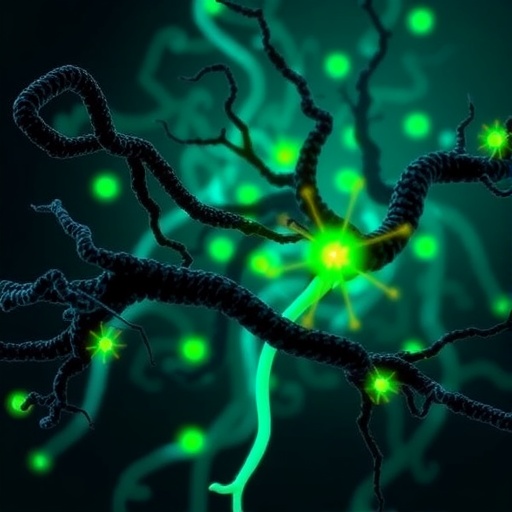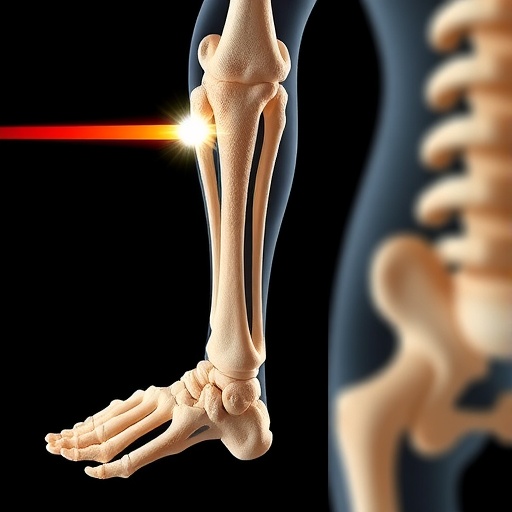
In a groundbreaking study set to redefine our understanding of inflammatory skin diseases and innate immune signaling, researchers have uncovered a novel molecular pathway linking STING activation to necroptotic cell death via ZBP1, independent of classical death receptor pathways. This revelation not only deepens insight into the mechanisms driving lethal dermatitis in Caspase-8-deficient epidermal keratinocytes but also sheds light on the pathological processes underlying human STING-associated interferonopathies such as SAVI (STING-associated vasculopathy with onset in infancy).
Caspase-8 (Casp8) has long been established as a critical regulator of cell death and inflammation in epidermal keratinocytes. Conditional deletion of Casp8 in these cells, referred to as Casp8^E-KO, precipitates a severe necroptosis-driven dermatitis culminating in lethality, yet the molecular players orchestrating this process remained poorly defined. The new research delineates how loss of Casp8 triggers the accumulation of cytosolic DNA, a key danger signal that robustly activates the cyclic GMP-AMP synthase (cGAS)/stimulator of interferon genes (STING) axis, thereby unleashing a potent interferon-stimulated transcriptional program.
Careful genetic and biochemical interrogation revealed that STING activation elevates expression of Z-DNA binding protein 1 (ZBP1) and mixed lineage kinase domain-like protein (MLKL), pivotal components of the necroptotic machinery. Intriguingly, the combination of Casp8 deficiency and STING activation fosters the accumulation of Z-nucleic acids, which serve as ligands for ZBP1. Activation of ZBP1 prompts the assembly of an alternative signaling complex comprising ZBP1, receptor-interacting protein kinase 1 (RIPK1), and receptor-interacting protein kinase 3 (RIPK3). This complex operates distinctly and independently from the canonical FADD-RIPK1-RIPK3 configurations traditionally recognized in necroptotic signaling pathways.
.adsslot_uqOyC3nzPY{width:728px !important;height:90px !important;}
@media(max-width:1199px){ .adsslot_uqOyC3nzPY{width:468px !important;height:60px !important;}
}
@media(max-width:767px){ .adsslot_uqOyC3nzPY{width:320px !important;height:50px !important;}
}
ADVERTISEMENT
This paradigmatic shift in our conceptual framework reveals a heretofore unappreciated axis through which necroptosis can be initiated without the involvement of tumor necrosis factor receptor 1 (TNFR1) or FADD-mediated signaling. Indeed, genetic studies demonstrate a functional redundancy and interplay between STING and ZBP1 in driving lethal skin inflammation, bypassing classical death receptor pathways. These findings elucidate a novel etiological mechanism underlying necroptotic inflammation, expanding the paradigms of innate immune regulation and programmed cell death.
The clinical ramifications of this discovery are profound, particularly in the context of STING-related human diseases. Gain-of-function mutations in STING engender a hyperactive interferon response responsible for SAVI, an interferonopathy marked by systemic inflammation, vasculopathy, and early onset morbidity. The study extends its findings to patient contexts by delineating how chronic STING activation precipitates an analogous necroptotic transcriptional signature in human cells.
Employing the N153S-SAVI murine model harboring constitutively active STING mutations common in human patients, the researchers observed recapitulation of immune cell–driven pathology and premature lethality mirroring clinical disease. Strikingly, genetic co-deletion of RIPK3 in these mice substantially rescued disease outcomes, affirming necroptosis as a central pathogenic driver orchestrated downstream of STING activation. This highlights the therapeutic promise of targeted modulation of necroptotic signaling axes in mitigating inflammation and tissue damage in interferonopathies.
At the molecular level, ZBP1 emerges as a crucial effector linking cytosolic nucleic acid sensing with necroptosis execution. The detection of Z-DNA or Z-RNA structures by ZBP1 induces recruitment and activation of RIPK3 and MLKL, culminating in necroptotic membrane rupture. This pathway operates independently of the death receptor pathways involving TNFR1 and FADD, circumventing canonical apoptotic and necroptotic signaling nodes previously considered indispensable.
The study’s intensive genetic and biochemical analyses underscore the intricate crosstalk between DNA sensing pathways and regulated cell death mechanisms. In Casp8-deficient keratinocytes, disrupted apoptotic brakes facilitate unchecked necroptosis, mediated by STING-stimulated ZBP1 engagement. This intricate interplay between immune sensing and programmed necrosis links genotoxic stress signals to tissue-level inflammation, explaining the fulminant dermatitis and systemic inflammation observed.
Furthermore, the identification of STING-mediated transcriptional upregulation of both ZBP1 and MLKL offers new molecular targets for therapeutic intervention. Modulating these effectors could fine-tune necroptotic responses in pathological contexts, offering hope for patients suffering from SAVI and potentially other interferonopathies characterized by aberrant necroptotic inflammation.
These findings also challenge the long-held dogma that necroptosis requires engagement of death receptors like TNFR1 or assembly of the FADD-RIPK1-RIPK3 complex. The revelation that ZBP1 forms an alternative necroptotic signaling platform independently broadens our comprehension of necroptosis as a flexible and context-dependent mode of cell death.
Given the pleiotropic roles of STING signaling in antiviral responses, cancer immunosurveillance, and inflammation, discerning the precise conditions and molecular partners that dictate necroptotic versus interferon-mediated outcomes will inform future drug development pipelines. Targeting the ZBP1-RIPK3-MLKL axis could provide therapeutic leverage not only for rare genetic disorders like SAVI but also for more common inflammatory diseases featuring necroptosis.
In sum, this study elegantly deciphers a novel cGAS-STING-ZBP1 necroptotic pathway independent of classical death receptor signaling, revealing critical mechanisms underpinning Casp8-deficient dermatitis and STING-associated interferonopathy. These discoveries illuminate previously uncharted territories in innate immunity and programmed cell death, setting the stage for novel therapeutic avenues harnessing modulation of necroptosis in inflammatory diseases.
As research advances, the integration of molecular genetics, immunology, and cell biology in models such as Casp8^E-KO epidermal keratinocytes and SAVI mice will continue to elucidate the complex signaling networks orchestrating immune homeostasis and pathology. The prospective development of inhibitors targeting ZBP1 or downstream necroptotic effectors could revolutionize treatment strategies for interferon-driven inflammatory syndromes, marking a new frontier in precision medicine.
In conclusion, by unveiling a STING-induced ZBP1-mediated necroptosis pathway operating independently of TNFR1 and FADD, this research provides a crucial conceptual and therapeutic breakthrough in understanding and combating lethal inflammation driven by dysregulated innate immune sensing.
Subject of Research:
Innate immune signaling pathways mediating necroptosis and inflammation, specifically the role of STING-induced ZBP1 activation in Caspase-8-deficient keratinocytes and STING-associated interferonopathies.
Article Title:
STING induces ZBP1-mediated necroptosis independently of TNFR1 and FADD.
Article References:
Kelepouras, K., Saggau, J., Bonasera, D. et al. STING induces ZBP1-mediated necroptosis independently of TNFR1 and FADD. Nature (2025). https://doi.org/10.1038/s41586-025-09536-4
Image Credits: AI Generated
Tags: Caspase-8 deficiency effectscGAS/STING axis activationcytosolic DNA danger signalshuman STING-associated interferonopathiesinflammatory skin diseases researchinnate immune signaling pathwayslethal dermatitis mechanismsmixed lineage kinase domain-like protein involvementnecroptotic cell death mechanismsSTING activation and necroptosisZ-DNA binding protein 1 functionZBP1 role in cell death





